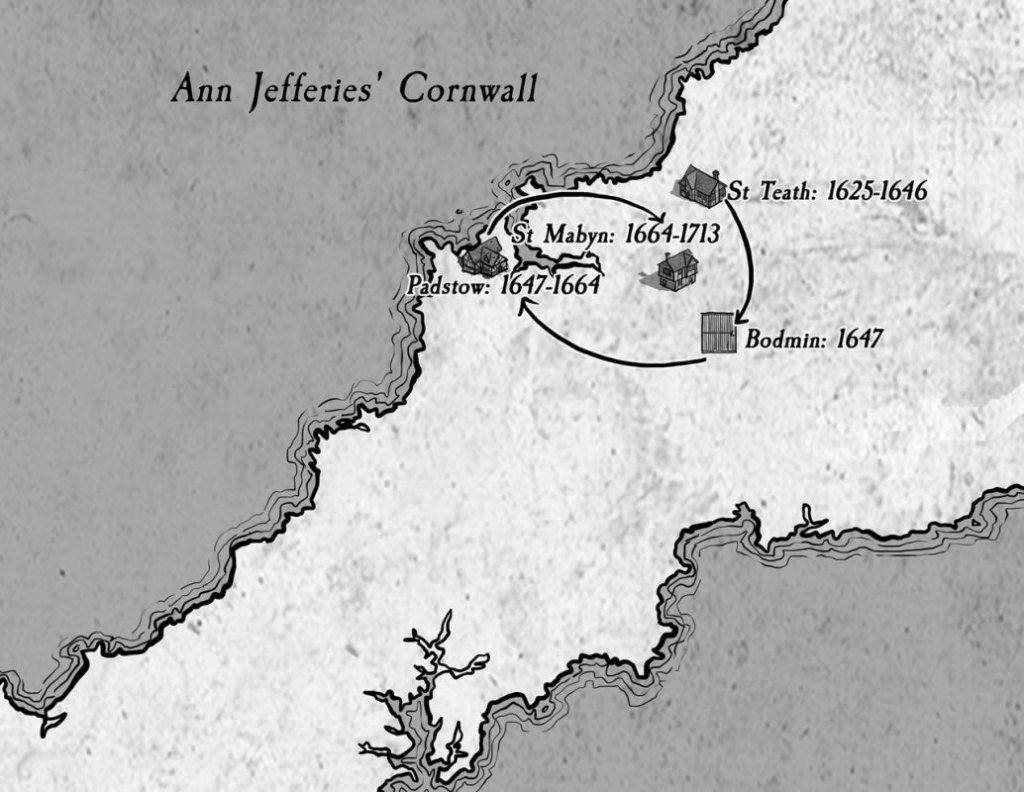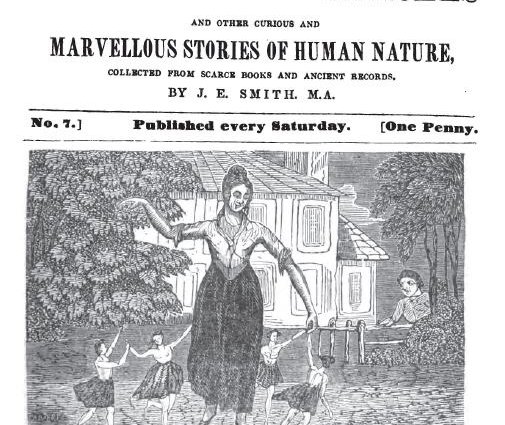So, Simon, how did you become interested in Ann Jefferies?
I’ve often written about Cornish folklore as a folklore historian and particularly Cornish fairy and pixylore. Ann Jefferies is special because she offers us, not our earliest evidence for Cornish fairies, but our earliest good evidence. She is also our best evidence for fairylore generally from east Cornwall.
So what happened to Ann?
Ann was a poor girl born in St Teath in 1625. She was taken into a well-to-do local family the Pitts as a nanny in her teens. Then, in early 1645, just nineteen, Ann’s life changed forever. She saw fairies. That happens to a surprising number of people, but Ann became what we sometimes term a ‘fairy witch’. She was able ask the fairies to cure and to harm people. She was, if you like, a Cornish shaman!
But wasn’t this dangerous for Ann?
Absolutely, we are almost at the height of the period of witch hunting and in the spring of 1647 she was carted off to Bodmin as a witch suspect. We don’t have the trial records, but we know that she was interrogated and also that she was brought before the judges. We also know that she somehow survived the experience. She may have got through alive because Ann was an avid royalist just after the end of the Civil War and she seems to have been popular locally. She was even called ‘the prophetess of Bodmin’.
What happened to her after?
She was sent to work in a family near Padstow and eventually she got married to a man from St Mabyn. Later in her life, a little boy she had nannied, Moses Pitt, tried to write her story. He got in touch with Ann but she told him, in no uncertain terms, that she wouldn’t have anything to do with it. Luckily for us Moses wrote an account of his memories of Ann and the fairies. I’ve gathered this and several other sources together in the book.
Did she live to read Moses’ pamphlet?
She seems to have been illiterate, but someone could have read it to her. After a lot of work I found her death date. She died at St Mabyn in 1713: she was almost ninety. Not bad for someone who had been tried as a witch in her early twenties. I’m particularly interested to find Ann’s gravestone at St Mabyn. She was buried under the name ‘Elizabeth Werrine’: Elizabeth was her baptismal name. If any reader can supply a photograph of the grave I’ll gladly forward a copy of the book in thanks.
What did Cornish fairies look like?
Well, according to Ann’s account they were about the size of children of three or four years of age and they wore green. They always appeared in even numbers and there were male and female fairies. They could leap up into a house through the windows and they were, as I noted above, able to hurt and cure their human neighbours. So beware!
S. R. Young, Ann Jefferies and the Fairies: A Source Book for a Seventeenth-Century Cornish Fairy Witch (Pwca Books 2022)
New Book on Cornish Fairy Witch, Ann Jefferies
I’ve often written about Cornish folklore as a folklore historian and particularly Cornish fairy and pixylore. Ann Jefferies is special because she offers us, not our earliest evidence for Cornish fairies, but our earliest good evidence. She is also our best evidence for fairylore generally from east Cornwall.
Ann was a poor girl born in St Teath in 1625. She was taken into a well-to-do local family the Pitts as a nanny in her teens. Then, in early 1645, just nineteen, Ann’s life changed forever. She saw fairies. That happens to a surprising number of people, but Ann became what we sometimes term a ‘fairy witch’. She was able ask the fairies to cure and to harm people. She was, if you like, a Cornish shaman!
This was a dangerous period to be messing around with magic. We are almost at the height of the period of witch hunting and in the spring of 1647 she was carted off to Bodmin as a witch suspect. We don’t have the trial records, but we know that she was interrogated and also that she was brought before the judges. We also know that she somehow survived the experience. She may have got through alive because Ann was an avid royalist just after the end of the Civil War and she seems to have been popular locally. She was even called ‘the prophetess of Bodmin’.

Afterwards, she was sent to work in a family near Padstow and eventually she got married to a man from St Mabyn. Later in her life, a little boy she had nannied, Moses Pitt, tried to write her story. He got in touch with Ann but she told him, in no uncertain terms, that she wouldn’t have anything to do with it. Luckily for us Moses wrote an account of his memories of Ann and the fairies. I’ve gathered this and several other sources together in the book.
After a lot of work I found Ann’s death date. She died at St Mabyn in 1713: she was almost ninety. Not bad for someone who had been tried as a witch in her early twenties. I’m particularly interested to find Ann’s gravestone at St Mabyn. She was buried under the name ‘Elizabeth Werrine’: Elizabeth was her baptismal name. If any reader can supply a photograph of the grave I’ll gladly forward a copy of the book in thanks.
And these Cornish fairies? Well, according to Ann’s account they were about the size of children of three or four years of age and they wore green. They always appeared in even numbers and there were male and female fairies. They could leap up into a house through the windows and they were, as I noted above, able to hurt and cure their human neighbours. So beware!
S. R. Young, Ann Jefferies and the Fairies: A Source Book for a Seventeenth-Century Cornish Fairy Witch (Pwca Books 2022)











